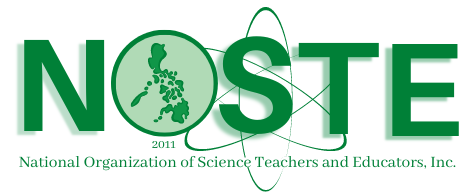Development of a Gamification Blueprint for Teaching Chemistry in Junior High School
RONADANE N. LIWANAG
University of the Philippines Rural High School
University of the Philippines, Los Baños, Laguna
rnliwanag@up.edu.ph
ABSTRACT
Among the innovative pedagogical strategies that are becoming more popular these days is gamification, transforming tasks and behavior into a more dynamic and engaging experience by borrowing the mechanics and ideas from games. With the belief that humans are naturally playful and curious, this research is grounded on the idea that motivation and engagement improve learning. This study adopts a participatory action research approach in developing a gamified classroom for a laboratory high school chemistry class in the northern part of the Philippines. It involved a two-step cycle, including the curation of game resources, developing game mechanics, award systems, and game economies. Methods of triangulation were done to establish the validity of the following resulting insights about the use of the gameful design on student interest, motivation, and engagement: (1) inclusion of more trade store items in the game economy help broaden student engagement and promote investment in the course (2) personalized achievement card allows flexibility and autonomy (3) game stations extend student learning beyond class time and increase student motivation, (4) game mechanics that allow students to interact with peers are most enjoyed and favored because of increased engagement among participants, which also promote collaborative learning, and (5) addition of creative outputs as extra tasks encourages creativity and allow for inclusive education. Findings also indicate that the implemented practice of action research enriches the teacher’s pedagogical repertoire for creating student-directed chemistry
lessons useful, appropriate, and relevant in this new normal in the education system.
Keywords:
gamified learning system; gamification blueprint; motivation and learning; student-directed learning; gameful design
REFERENCES
- Abramovich, Samuel, Schunn, Christian, and Higashi, Ross Mitsuo (2013). Are badges useful in education: it depends upon the type of badge and expertise. Education Tech Research Dev. Springerlink.
- Adonis, M. (May 11, 2021). PH lags behind in acting on remote learning. Inquirer.net.
- Barata, Gabriel, Gama, Sandra, Jorge, Joaquim, and Goncalves, Daniel. (2015). Gamification for smarter learning: tales from the trenches. Smart Learning environments. SpringerLink.
- Borys, M., & Laskowski, M. (2013, June). Implementing game elements into didactic process: A case study. In Management, knowledge and learning international conference, 819-824.
- Burkey, D. D., Anastasio, D. D., & Suresh, A. (2013, June). Improving student attitudes toward the capstone laboratory course using gamification. In 2013 ASEE Annual Conference & Exposition, 23-718.
- Cross, K Patricia. (1999). Learning is about Making Connections. League for Innovation: California, USA, 5-24.
- de Byl, Penny, and James Hooper (2013). Key attributes of engagement in a gamified learning environment. Paper presented at 30th Ascilite Conference: Macquarie, Sydney, Australia, 221-230.
- Schutter, B., & Abeele, V. Gradequest–Evaluating the impact of using game design techniques in an undergraduate course (2014). Foundations of Digital Games. Proceedings of the 9th International Conference on the Foundations of Digital Games.
- Dollanganger, C. (October 6, 2020). Philippines: The Rich and the Poor Divide in Distance Learning. The News Lens.
- Eugenio Jr, F. C., & Ocampo, A. J. T. (2019, February). Assessing classcraft as an effective gamification app based on behaviorism learning theory. Proceedings of the 2019 8th International Conference on Software and Computer Applications, 325-329.
- Handog, M.J. (August 17, 2020). The pandemic is reshaping education, here’s how the Philippines is coping. Rappler.
- Holman, Caitlin, Aguilar, Stephen, and Fishman, Barry. (2014). Gradecraft: What can we learn from a game-inspired learning management system? Paper presented at the Third International Conference on Learning Analytics and Knowledge.
- Juul, Jesper (2001). Games telling stories. The international Journal of Computer Game Research. 1(1). [electronic copy]
- Kapp, K.M. (2012) Games, Gamification, and the Quest for Learner Engagement. T+D 66(6), 64-68.
- Landicho, J., Cerna, A. D., Marapao, J., Balhin, G., & Paid, R. (2017). Hortari: A gamification application for engaged teaching and learning in higher education. Journal of e-Learning and Knowledge Society, 13(1).
- Lee, J. J. and Hammer, J. (2011) Gamification in Education: What, How Why Bother? Academic Exchange Quarterly, 12 (5).
- Marzano, Robert J. (2007). The art and Science of Teaching. Virginia, USA: ASCD Publications, 98-130.
- Murphy, Curtiss (2010). Why games work and the Science of Learning. Paper presented at the Damage Contron Trainer program: Great Lakes, Illinois, USA.
- Nicholson, S. (2012). Strategies for meaningful gamification: Concepts behind transformative play and participatory museums. Meaningful Play, 1999, 1-16.
- Nicholson, S. (2013). Exploring gamification techniques for classroom management. Paper presented at Games& Learning& Society 9.0, Madison, WI.
- Osheim, Darcy Elaine (2013). This could be a game: defining gamification for the classroom. San Jose State University ScholarWorks. Master’s theses, Paper 4304.
- Samonte, M. J. C., Guce, F. C. D., Peraja, J. M. P., & Sambile, G. D. V. (2019, February). Assistive gamification and speech recognition E-tutor system for speech impaired students. In Proceedings of the 2nd International Conference on Image and Graphics Processing, 37-41.
- Sansivero, G. (2016). Challenges and advantages of Collaborative learning: Developing workforce readiness in students. Seen Magazines US articles.
- Schunk, Dale (2012). Learning theories: an educational perspective. Boston, MA, USA. Pearson Education, 17-40.
- Sirhan, G. (2007). Learning difficulties in chemistry: An overview. The Journal of Turkish Science Education, 4(2), 2-20.
- Stott, Andrew and Carman and Neustaedter (2013) Analysis of gamification in education. Technical Report 2013-0422-01, Connections Lab, Simon Fraser University, Surrey, BC, Canada, 1-8.
